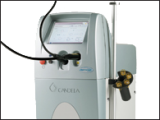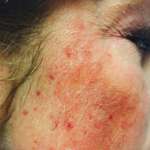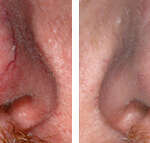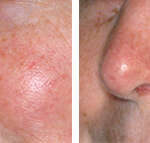Vbeam Laser Treatment
Vbeam Perfecta can do it all: from rejuvenation by correcting red and brown skin discoloration, to eliminating virtually all vascular and pigmented lesions. The Vbeam Perfecta features advanced micro-pulse technology, multiple handpieces for treating various spot sizes, and our patented Dynamic Cooling Device™ (DCD™) cooling system, which all but eliminates patient downtime by preventing purpura, or bruising. And like all Candela products, Vbeam Perfecta is backed by Candela’s unmatched training, marketing and service support.
Treatments:
Rosacea: Reduces redness and can help control the symptoms of rosacea, a condition characterized by flushing and redness in the face.
Port-Wine Stains (Red birthmarks): Lightens or removes birthmarks that appear as reddish or purplish discolorations on the skin.
Acne Scars: Helps reduce the redness associated with acne scars, making them less noticeable.
Spider Veins: Treats small, dilated blood vessels on the face and legs.
Cherry Angiomas: Removes small red moles known as cherry angiomas.
Venous Lakes: Treats venous lakes, which are blue or purple venous malformations commonly found on the lips and face.
Poikiloderma of Civatte: Addresses the redness and pigmentation changes that occur in this condition, often found on the neck and chest.
Red Stretch Marks: Can reduce the appearance of stretch marks by targeting the redness.
Warts: In some cases, Vbeam laser treatment can be used to treat warts by destroying the blood vessels feeding the wart.
Bruising: Speeds up the healing of bruises by targeting the blood vessels involved, making it particularly useful after surgical procedures or cosmetic injections that may cause bruising.
Red Spots: This includes various types of red lesions on the skin, such as petechiae (tiny red spots caused by bleeding under the skin) or small hemangiomas (benign tumors of blood vessels). The Vbeam laser can help lighten or remove these spots.
Telangiectasia: These are small, dilated blood vessels (“broken blood” vessels) near the surface of the skin, often appearing on the nose, cheeks, and legs. The Vbeam laser can effectively reduce their appearance by coagulating these tiny blood vessels without damaging the surrounding skin.
Photo Gallery
Frequently Asked Questions
Vbeam deliver an intense but gentle burst of light into selectively targeted areas of the skin. The light is absorbed by specific blood vessels or melanin pigmented areas in the dermis depending on the condition being treated. Factors such as the age, color and type of lesions, as well as the location on the body, all determine whether lesions can be removed.
Your practitioner will ensure you are as comfortable as possible; most patients are reclined or lying down depending on the area being treated. Both the patient and the practitioner will be wearing protective eyewear. When treatment begins, the laser will be calibrated and parameters will be set based on the specific condition being treated, each condition and each individual is unique and these settings maximize the results you will see following treatment.
The only requirement is that you have a desire to improve the condition of your skin. Most patients who receive cosmetic laser treatment opt for procedures to correct skin conditions not out of medical necessity, but because they are interested in improving the appearance of their skin without invasive surgery that would cause downtime away from daily activities. From total facial rejuvenation which involves the reduction and removal of red and brown pigmented lesions with a general firming of the skin, to the removal of sun-spot damage, patients should discuss with their practitioner which treatments are right for them.
No anesthetics are required, but they may be used. The feeling most patients report is a warming or tingling sensation during treatment. The skin being treated is additionally protected by Candela’s dynamic cooling method, DCD, which delivers a cooling mist on to the skin before the laser pulse is emitted. This cooling mist increases comfort during treatment, as well as protects the skin to minimize side effects like redness.
Yes. In fact, treatment is so safe that it has been successfully used since the 1980’s for the treatment of port wine stain birthmarks in infants and young children. During treatment, the epidermis is protected by Candela’s exclusive dynamic cooling method, DCD, which sprays a cooling mist onto the targeted area of skin before each laser pulse, maximizing comfort and protecting the skin during treatment.
Permanency of results depend on many factors, like the condition being treated, or lifestyle of the patient. For example, if a patient has sun spots removed, and continues to spend time in the sun without adequate skin protection, it is likely that the sun spots will return. Talk with your practitioner about your goals and expectations for treatment.
Most patients notice beneficial results right away, and often times feel a firming or tightening of the treated area. The results of laser therapy vary depending on the condition that is being treated and the number of treatments required for clearance.
Some patients experience redness or mild swelling in the treated area immediately following treatment, this usually goes away in a few hours. Occasionally purpura, a laser bruise, may occur. Purpura is transient and usually disappears in three to five days.
It is recommended to avoid sun exposure before and throughout treatment to maximize results. A sunblock of SPF 30 or higher should be worn daily during this time. Post treatment care guidelines depend on the condition treated, and should be discussed with you practitioner.






